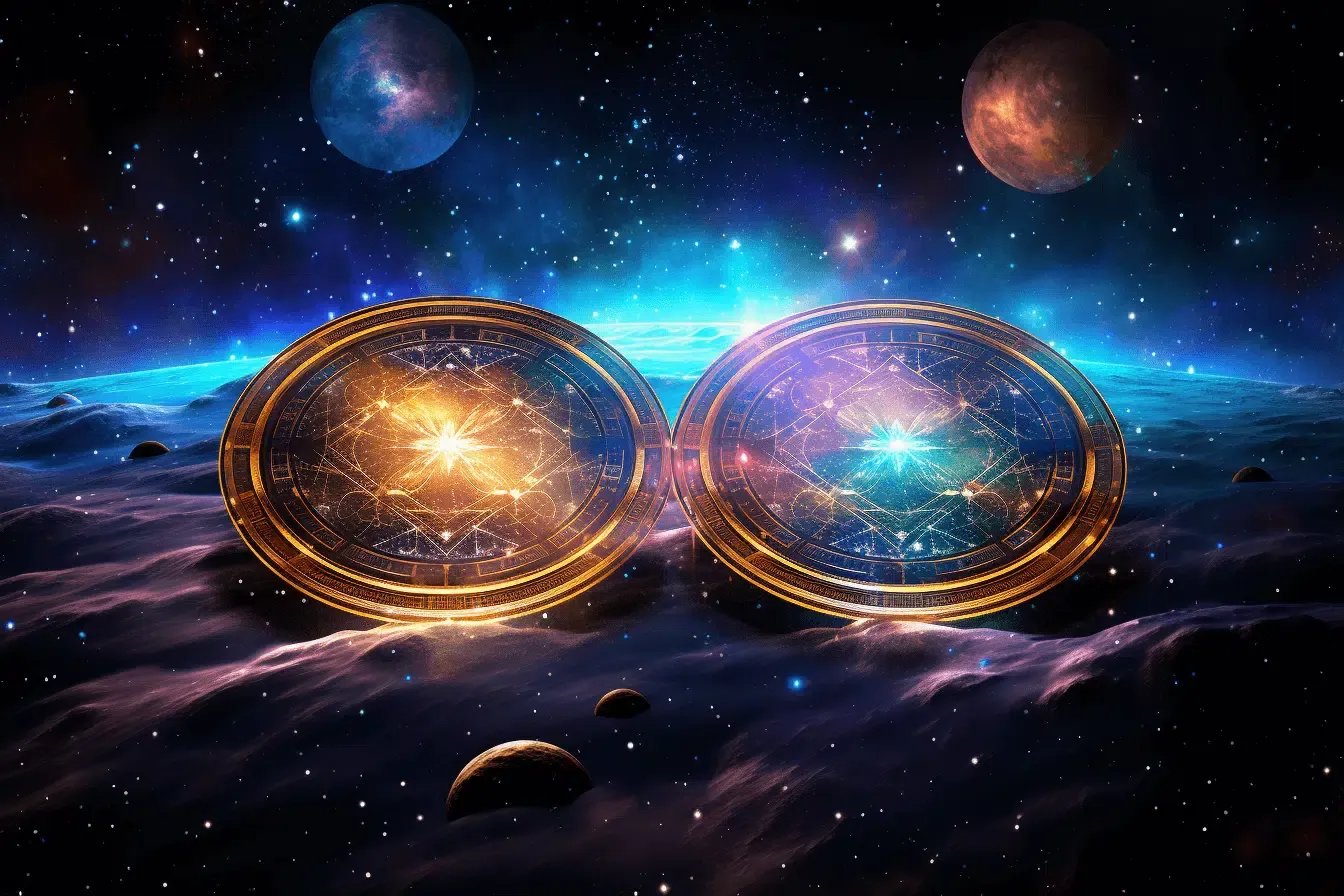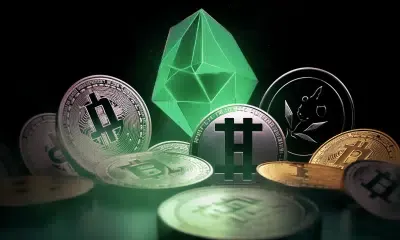What is Polygon (MATIC)? Understanding the Layer 2 Ecosystem
Delve into the world of Polygon (MATIC) and unlock the secrets of its Layer 2 ecosystem. Discover scalability, versatility, and other key features in this comprehensive guide.

Blockchain technology has unleashed a wave of innovation, opening up new possibilities for decentralized applications (dApps), digital assets, and smart contracts. However, as these networks grow, they often encounter scalability issues. Ethereum, one of the largest and most widely used blockchain platforms, is no exception. Enter Polygon (MATIC), a Layer 2 scaling solution that enhances Ethereum’s capabilities.
This guide delves into the details of MATIC, its workings, advantages, and its role in shaping the future of blockchain technology.
Understanding Polygon (MATIC)

Depicting Polygon
Polygon, formerly known as Matic Network, is an interoperability and scaling framework that aims to enhance the performance and potential of Ethereum-compatible blockchains. It was born out of the need to address significant challenges that Ethereum faces, including slow transaction speeds, high transaction fees, and poor user experience due to network congestion.
Essentially, MATIC is a Layer 2 scaling solution that runs alongside the Ethereum main chain, enabling swift, low-cost off-chain transactions for payments and general interactions with off-chain smart contracts.
It’s like a parallel highway system that eases the traffic on the main Ethereum blockchain, improving its scalability and transaction throughput.
The mechanics of Polygon
Polygon employs a unique multi-layer architecture to provide users and developers with a flexible, scalable, and user-friendly platform. It primarily consists of four layers: the Ethereum layer, security layer, Polygon Networks layer, and execution layer.
The Ethereum layer is a suite of smart contracts deployed on the Ethereum network, dealing with transaction finality, staking, and communication between Ethereum and various MATIC chains. The security layer runs alongside Ethereum and offers an optional “validators-as-a-service” role, providing an extra layer of security.
The Polygon Networks layer is a collection of blockchain networks built on the Polygon protocol. Each network has its community and handles local consensus and block production.
Lastly, the execution layer is Polygon’s Ethereum Virtual Machine (EVM) used for executing smart contracts. This multi-layer model allows MATIC to maintain a balance between scalability, security, and decentralization.
The MATIC token: Fueling the Polygon ecosystem
The MATIC platform operates using the MATIC token. This Ethereum-compatible ERC-20 token serves multiple purposes within the Polygon ecosystem. It is used for transaction fees, staking, and participating in the network’s governance by voting on Polygon Improvement Proposals (PIPs).
Validators in the Polygon network are incentivized to secure the network through staking rewards in the form of MATIC tokens. Users can also earn MATIC rewards by delegating their tokens to validators, contributing to the overall speed of block creation, and earning passive income.
Polygon’s founding team
Polygon was conceived by a team of dedicated and skilled blockchain developers. It was founded by Jaynti Kanani, Sandeep Nailwal, and Mihailo Bjelic in 2017. The team’s expertise and vision have been instrumental in establishing MATIC as a promising Ethereum scalability project.
Their foresight and commitment have helped MATIC secure substantial investments from well-known venture capitalists and industry stalwarts, including Mark Cuban.
The significance of Layer 2 chains
Ethereum’s strength lies in its decentralization, robust security, and vibrant ecosystem. However, its low transaction per second (TPS) capacity compared to other Layer 1 blockchains often results in high gas fees and slow transactions.
Layer 2 solutions like MATIC mitigate these issues by creating a parallel network that enhances transaction speed and reduces transaction costs. Key features of Polygon’s layer 2 ecosystem
Polygon’s layer 2 ecosystem comes with several key features that make it a popular choice for developers and users alike:
1. Scalability
MATIC significantly increases the throughput of the Ethereum network by providing multiple sidechains. Each of these sidechains can handle its transactions, thereby increasing the overall capacity of the ecosystem.
2. Interoperability
MATIC is compatible with Ethereum’s smart contracts, allowing developers to migrate their Ethereum-based applications seamlessly to Polygon’s Layer 2. This interoperability fosters a vibrant ecosystem where existing Ethereum assets and tools can be used without modification.

Significance of Polygon’s Layer 2 ecosystem – Image via Unsplash
3. Low transaction fees
With Polygon, users enjoy low gas fees compared to the Ethereum mainnet. This affordability is especially appealing for decentralized finance (DeFi) applications and everyday transactions.
4. Security
Polygon maintains a strong security model through regular checkpoints on the Ethereum mainnet. This ensures the safety of assets and transactions on Polygon’s sidechains.
5. User-friendly
Polygon’s ecosystem is designed to be user-friendly, making it accessible to developers and users with varying levels of expertise. Tools like the Polygon Bridge simplify asset transfers between Ethereum and Polygon.
How Polygon functions: A closer look
Polygon attributes its success to its innovative scaling solutions and incentive structures. It operates using a proof-of-stake (PoS) mechanism, making transactions on Polygon significantly cheaper. This enables emerging sectors like GameFi to thrive without committing large capital to move assets.
Validators play an integral role in maintaining the efficiency of the Polygon network. By staking their tokens, they increase the overall speed of block creation and generate passive income for MATIC token holders.
In addition to being a scaling solution, Polygon enables developers to launch preset blockchain networks tailored to meet specific requirements and needs. This flexibility positions MATIC as a go-to platform for developers and companies looking to leverage Ethereum’s robustness while maintaining their blockchain sovereignty.
The future of Polygon: An expanding ecosystem
Polygon aims to support a wide range of blockchain scaling solutions to increase transaction throughput while maintaining security and usability. It plans to incorporate other side chains or enterprise chains running their own PoS system.
Currently, only secure chains and stand-alone chains, both of which are MATIC PoS blockchains. MATIC envisions a future where it will not just act as a transaction highway but a platform offering developers and companies access to a suite of tools compatible with Ethereum.
dApps, DeFi protocols, and scalable blockchains will be able to interact with other Ethereum-based projects, making transactions nearly cost-free and allowing secure information sharing.
How to use Polygon
CoolWallet supports the MATIC chain, which allows users to store MATIC natively and access and trade it via the CoolBitX Crypto App. Ethereum can quickly connect to the MATIC network with a suitable wallet and some Ether and MATIC ready for transfer.
To independently set up the Polygon network on MetaMask, users need to navigate to the network settings of the supported wallet and select “Custom RPC.” Then, they must enter the following information:
- Network name: Polygon Mainnet
- New RPC URL: https://rpc-mainnet.maticvigil.com/
- Chain ID: 137
- Currency symbol: MATIC
- Block Explorer URL: https://explorer.matic.network/
The future of Ethereum with Polygon
Polygon is not a competitor to Ethereum but rather a complementary network. It aims to create an infrastructure that can handle the mass adoption of Ethereum. Therefore, MATIC is more dependent on Ethereum than Ethereum is on Polygon.
Polygon (MATIC) vs. Ethereum Layer 1
Layer 2 solutions like MATIC can make protocols running on top of Ethereum faster and cheaper. On the other hand, Layer 1 describes the underlying base blockchain architecture, and Layer 2 lies on top of it as an overlying network.
The role of Polygon in the DeFi ecosystem
MATIC is playing a pivotal role in the DeFi ecosystem by providing a reliable and efficient platform for developers. It enables the mass adoption of DeFi by developing a decentralized, immutable, and trustless blockchain infrastructure with high scalability and low-cost transactions.

Investing in MATIC – Image via Pixabay
Conclusion
As the blockchain ecosystem continues to evolve, solutions like MATIC will be instrumental in addressing scalability and interoperability challenges. By enhancing the capabilities of existing blockchain platforms like Ethereum, MATIC is paving the way for the next generation of decentralized applications and digital assets.




